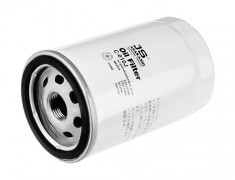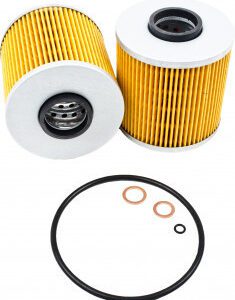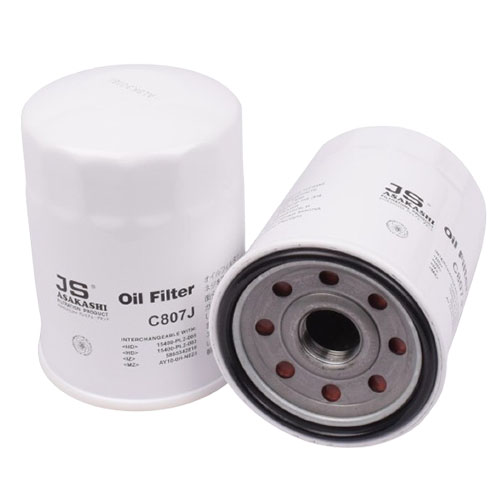-20%
Get Honda Inspire Oil Filter Element Assy C807J in Kenya
The Oil Filter Element Assembly plays a critical role in maintaining the cleanliness, efficiency, and longevity of an engine. It is responsible for filtering out contaminants from the engine oil, preventing dirt, debris, and other particles from circulating within the engine’s moving parts. An oil filter that works efficiently ensures that your engine remains lubricated and protected, allowing it to operate smoothly for longer periods. In this article, we’ll dive into what the oil filter element assembly is, why it is important, signs of a bad filter, and the benefits of maintaining a clean filter.
What Is an Oil Filter Element Assembly? 🤔
An Oil Filter Element Assembly is a component of a vehicle’s engine oil system. It consists of a filtering medium (the element) and a housing that contains the filter. The assembly is designed to filter out impurities and contaminants from the engine oil before it is circulated throughout the engine. This ensures that the oil remains clean, effective, and capable of lubricating the engine’s internal components.
The filter element itself is typically made of materials like paper, synthetic fabric, or metal mesh, depending on the design and intended use. It works by trapping particles and debris as the oil flows through it, ensuring that only clean oil reaches the engine components.
How Does the Oil Filter Element Assembly Work? 🛠️
The oil filter is an integral part of the lubrication system of an engine. Here’s how it works in the system:
-
Oil Circulation: When the engine is running, oil is pumped through the engine to lubricate various parts, such as the pistons, crankshaft, and valves. The oil helps to reduce friction, prevent wear, and keep the engine running smoothly.
-
Filtration Process: As the oil circulates, it passes through the oil filter element. The filter captures particles such as dirt, metal shavings, dust, carbon, and other contaminants that could potentially cause damage to the engine components.
-
Contaminant Trapping: The oil filter element contains a fine mesh or paper-based material that traps these impurities. Depending on the size of the contaminants, the oil filter may have different filtration layers to ensure maximum efficiency.
-
Clean Oil Flow: Once the oil is filtered, it is sent back into the engine to continue circulating and lubricating. Clean oil reduces the risk of wear and tear on engine components, ensuring that the engine operates optimally.
-
Bypass Valve: Some oil filter assemblies include a bypass valve that allows the oil to bypass the filter if it becomes clogged or the flow of oil is restricted. This ensures that the engine continues to receive oil even if the filter is compromised.
Why Is an Oil Filter Element Assembly Important? ⚙️
The oil filter element assembly is essential for maintaining engine health. Here’s why:
1. Keeps Engine Oil Clean and Effective 🧼
Engine oil becomes contaminated over time as it picks up dirt, metal particles, and carbon deposits. If these contaminants aren’t filtered out, they can reduce the oil’s effectiveness, causing the engine to work harder and wear out faster. The oil filter ensures that the oil remains clean, preventing premature engine wear and failure.
2. Reduces Engine Wear and Tear ⏳
By trapping debris and contaminants, the oil filter helps to prevent these particles from circulating through the engine. If particles like dirt and metal shavings were allowed to pass through without being filtered out, they could cause abrasion and damage to the engine’s internal components, including the cylinders, pistons, and bearings.
3. Enhances Engine Performance 🚗
A clean engine is a smooth-running engine. When the oil filter element works properly, it ensures that the oil is clean and lubricating the engine efficiently. This leads to improved fuel efficiency, better engine performance, and a smoother ride.
4. Extends Engine Lifespan 💯
Regular oil filtration and oil changes play a significant role in increasing the overall lifespan of an engine. By maintaining clean oil and preventing contaminants from circulating, the oil filter helps keep the engine in good condition for a longer period of time. This means fewer repairs and better long-term reliability.
Signs That the Oil Filter Element Needs to Be Changed ⚠️
An oil filter does not last forever. It needs to be replaced regularly as part of routine vehicle maintenance. Here are some common signs that your oil filter might need replacing:
1. Poor Engine Performance 🔧
If you notice that your engine is not running as smoothly as it used to, or you experience rough idling, hesitation, or loss of power, it could be because the oil filter is clogged or not functioning properly. A clogged filter restricts the flow of oil to the engine, affecting its ability to lubricate and perform efficiently.
2. Oil Pressure Warning Light 🚨
If the oil pressure light comes on, it could indicate that the oil filter is clogged or there is a problem with the oil circulation. A clogged filter can lead to a drop in oil pressure, which can result in insufficient oil flow to the engine. This can cause significant engine damage if not addressed immediately.
3. Engine Overheating 🔥
Since oil helps regulate engine temperature, a clogged filter can cause the engine oil to become less effective at dissipating heat. This may lead to the engine overheating or running hotter than usual, which can result in long-term damage to engine components.
4. Oil Leaks 🛢️
Sometimes, a faulty oil filter may cause oil to leak from the engine. If the filter’s gasket or seal is damaged, it can cause oil to escape from the filter housing, leading to an oil leak. Leaking oil can create a mess and is harmful to the engine and the environment, so it’s important to check for oil leaks regularly.
5. Dirty or Contaminated Oil 🧽
If you notice that your oil looks unusually dark, gritty, or full of debris, it could indicate that the filter isn’t doing its job properly. A properly functioning filter should keep the oil clean, so dirty oil may mean the filter has become ineffective.
How to Maintain the Oil Filter Element Assembly 🔧
To ensure that your oil filter assembly is always performing at its best, here are a few maintenance tips:
1. Change Oil Regularly ⏰
It’s essential to replace the oil and filter regularly according to the vehicle’s recommended maintenance schedule. Typically, oil and filter changes should occur every 3,000 to 7,000 miles (or as specified by the manufacturer).
2. Use the Right Oil Filter 🔍
Make sure to use the correct type and size of oil filter for your vehicle. The wrong filter can lead to poor filtration and reduced oil flow, potentially causing damage to the engine. Always refer to your vehicle’s manual or consult a professional mechanic.
3. Inspect the Oil Filter for Leaks 🔍
Periodically check the oil filter for any signs of leaks or wear. If the filter is cracked, the gasket is worn, or oil is seeping from the filter, it’s time for a replacement.
4. Don’t Skip Oil Changes 🛢️
It’s essential not to skip oil changes. Over time, the oil filter becomes clogged with dirt, contaminants, and particles. If the oil filter isn’t replaced at the recommended intervals, it will no longer effectively filter out these contaminants, leading to poor engine performance.
Conclusion: Protect Your Engine with Regular Oil Filter Maintenance 🔧🛢️
The Oil Filter Element Assembly plays an essential role in keeping your engine running smoothly, efficiently, and reliably. By trapping contaminants and maintaining clean oil, the oil filter helps protect your engine from unnecessary wear and tear. Regular oil changes and filter replacements are a small investment compared to the high cost of engine damage or failure.
Maintaining a clean and functional oil filter is crucial to ensuring the longevity of your vehicle. So, always keep an eye on the signs of a bad filter, and don’t delay replacing it to keep your engine running at its best!
Follow us on Facebook for more parts.



